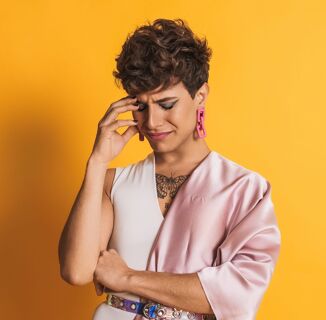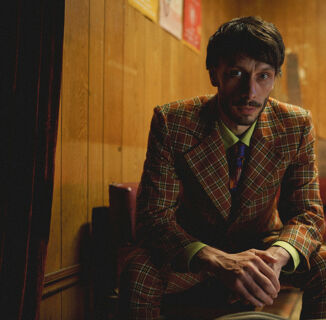Today is National Black HIV/AIDS Awareness Day. It’s alsoRonald Reagan’s birthday, which is ironic considering that he and his administration turned a blind eye to the disease leading to one of the deadliest epidemics in modern history.
As a black gay man, I believe HIV/AIDS awareness isn’t just about increasing knowledge about an epidemic that ravaged the queer community in the 1980s and 1990s, but understanding the impact the virus continues to make on how me andothers like me live our lives navigating both the black and queer communities.
Inside the greater LGBTQ community, black gay men and trans women are not marked only by their skin color, but with all the stereotypes and fears that have been perpetuated by the majority culture’s representation of us. The stigma around HIV/AIDS has contributed to myliving in fear of getting the virus because, with so many narratives in queer and mainstream cultures about how often black men have HIV, it’s no wonder the disease has loomed as large as it has. By stigmatizing black men, our society has created a sealed off environment that has only encouraged HIV’s spread.
While there have been significant strides in research and prevention, it’s important to note that for black LGBTQs, access to medical advances is still limited. According to a pharmacy-based PrEP survey, only 10% of PrEP users were black, compared to 74% who were white. This is disproportionate to the probability of becoming HIV positive for black gay men, which is still over 50%. That statistic alone should enrage everyone. In fact, in 2016 44% of all new HIV diagnoses were among African Americans, though we only make up 12% of the population. Between 2011 and 2015, the diagnoses of African American men between the ages of 25-34 increased by 30%.
Black gay men and trans women are also not represented in many HIV cure and prevention studies. This is due in part to justifiable mistrust of medical research dating back to the Tuskegee syphilis experiments that ended in the 1970s, wherein black men were experimented on to observe the effects of untreated syphilis. But by limiting access to vital cure and prevention research, black men are often the least likely or last to benefit from medical advances.
So why, when new transmissions of HIV are the lowest they have ever been, are black gay men not sharing in the same victories that many other demographics of the queer community have over HIV/AIDS?
There are lots of layers as to how this disease has managed to keep a hold on our community, and testing is the first obstacle. Barriers to accessing testing are a big hurdle that must be cleared in order to decrease transmission within the community. Additionally, the high HIV prevalence in the black gay community coupled with the tendency of African American men to date within their own race leads to the rate of transmission being necessarily higher. The LGBTQ community as a whole is not hermetically sealed from its own oppression problems. Down low culture and homophobia in the black community is a contributing factor, but so is the racism that exists in gay dating.

Decriminalizing HIV would be great first step in helping communities of color to get tested more often. Black and latino men make up two thirds of those who have come in contact with the penal system for HIV-related crimes in California. This criminalization creates a system in which ignorance is bliss. It doesn’t help to reduce the rate of new diagnoses of HIV, and it also disproportionately targets sex workers, many of whom are trans women of color.
Communities of color, due to their systemic oppression and exposure to poverty, have often not been viewed as worth saving, meaning that attempts to educate them on HIV/AIDS have ben poor to say the least. In a society that doesn’t value black life (Black Lives Matter), it’s not hard to see why communities of color have been overlooked in health outreach initiatives that are geared towards ending the spread of HIV.
There should be an urgent shift in getting sexual health services and education out to these communities that are so severely at risk.
In order to create a AIDS-free generation, organizations should bring HIV/AIDS education to at-risk youth.By increasing access to condoms, making HIV preventatives like PrEP and PeP available and affordable to communities of color, we can create an impact so that it will not longer be the case that 1 in 2 black gay men will contract HIV in their lifetime.
HIV/AIDS has taken its toll on all of the LGBTQ community, but particularly amongst black gay men. It needs to stop being treated as a typical disease and seen for what it is, a symptom of a larger system of oppression and disenfranchisement. We know how to treat the disease effectively, but that is not enough with transmission rates has high as they are for the black queer community. In order to beat HIV/AIDS, we need to start looking at the underlying social conditions that perpetuate it, which Ronald Reagan, President of the United States, refused to do.
So today, we celebrate and honor National Black HIV/AIDS Awareness Day in hopes that young gay black men will stop being afraid, but start getting educated about an enduring epidemic.
Help make sure LGBTQ+ stories are being told...
We can't rely on mainstream media to tell our stories. That's why we don't lock our articles behind a paywall. Will you support our mission with a contribution today?
Cancel anytime · Proudly LGBTQ+ owned and operated
Read More in Culture
The Latest on INTO
Subscribe to get a twice-weekly dose of queer news, updates, and insights from the INTO team.
in Your Inbox














